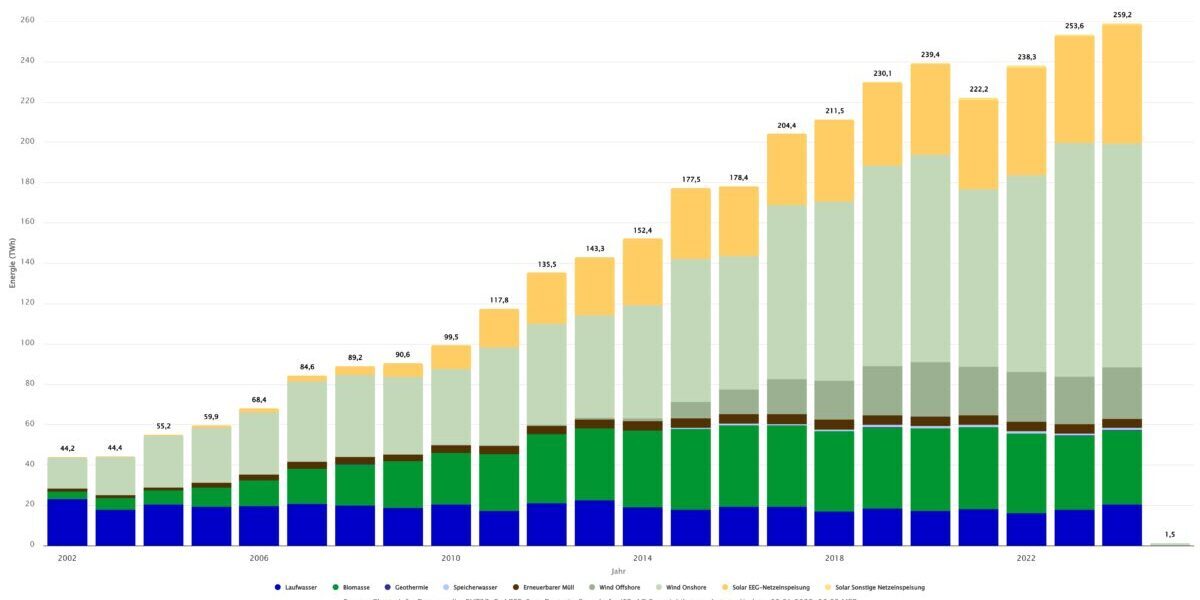Researchers at Germany's Fraunhofer Institute for Solar Energy Systems ISE (Fraunhofer ISE) are applying deep learning techniques and digital twin modeling tools to optimize PV tracker control systems for use in agrivoltaics and biodiversity-optimized PV systems.
The aim is to be able to automatically position the solar modules throughout the day to serve the needs of the plants growing below in light of the microclimatic conditions and to optimize yield in light of grid conditions and tariffs. The researchers hope to develop a market-ready computationally-light and cost-effective predictive control system for solar trackers.
The project, known as DeepTrack, is a collaboration between Zimmermann PV-Tracker, part of the Zimmermann PV-Steel Group, and Fraunhofer ISE. It involved setting up a power plant with bifacial solar PV at the ISE’s outdoor performance testing site in southern Germany. It anticipates growth in the use of trackers, more powerful control systems, and greater adoption of agrivoltaics (APV) in Germany. “
“As a first step, we developed control sequences that were geared towards the optimal electricity yield of bifacial solar modules or the best conditions for the plants underneath the APV system,” explained Fraunhofer ISE team leader Matthew Berwind. “The next step is to combine the two approaches so that both aspects are maximized as much as possible. Calculating this sweet spot is challenging but possible with our AI-based approach.”
The research installation uses trackers supplied by Zimmermann PV-Tracker and with monitoring sensor systems to measure diffuse light, for example. The gathered field data is used in the digital twin models, along with certain datasets, such as weather forecasts. The aim is to use artificial neural network deep learning techniques to enable control systems that initiate tracker actions based on both the light requirements of the plant varieties below and grid feed-in tariffs at certain times of the day, for example.
The project website says it will be a “less computationally intensive and predictive metamodel” that can be implemented on mainstream computers.
The researchers are anticipating growth in the use of trackers. They refer to new German regulations that are expected to enable increased adoption of agrivoltaics, as well as industry forecasts that foresee 60% penetration of tracking over the next ten years, citing the International Technology Roadmap for Photovoltaics from the German Engineering Federation (VDMA). They also point to a Spanish market trend where trackers are reportedly used in “most newly built ground-mounted” PV systems.
“For APV systems in particular, with its wide variety of crops and systems, we see great potential for tracking PV systems with optimized tracking algorithms,” said Hannes Elsen, Zimmermann PV product manager.
The DeepTrack research project is funded by Germany’s Baden-Wuerttemberg Ministry of Economic Affairs, Labor and Tourism and is scheduled to run until early 2025. It is one of several agrivoltaic projects that the Fraunhofer ISE is currently working on.
This content is protected by copyright and may not be reused. If you want to cooperate with us and would like to reuse some of our content, please contact: editors@pv-magazine.com.



By submitting this form you agree to pv magazine using your data for the purposes of publishing your comment.
Your personal data will only be disclosed or otherwise transmitted to third parties for the purposes of spam filtering or if this is necessary for technical maintenance of the website. Any other transfer to third parties will not take place unless this is justified on the basis of applicable data protection regulations or if pv magazine is legally obliged to do so.
You may revoke this consent at any time with effect for the future, in which case your personal data will be deleted immediately. Otherwise, your data will be deleted if pv magazine has processed your request or the purpose of data storage is fulfilled.
Further information on data privacy can be found in our Data Protection Policy.